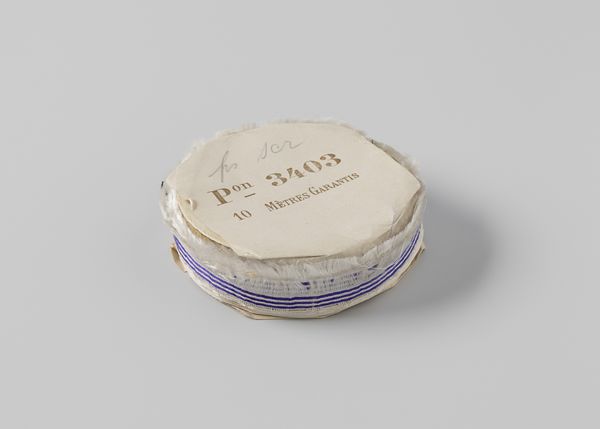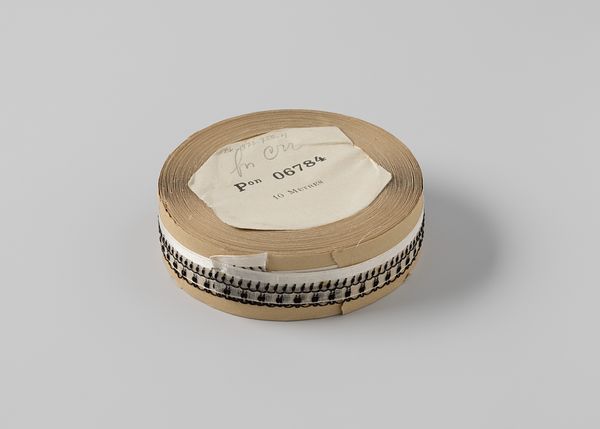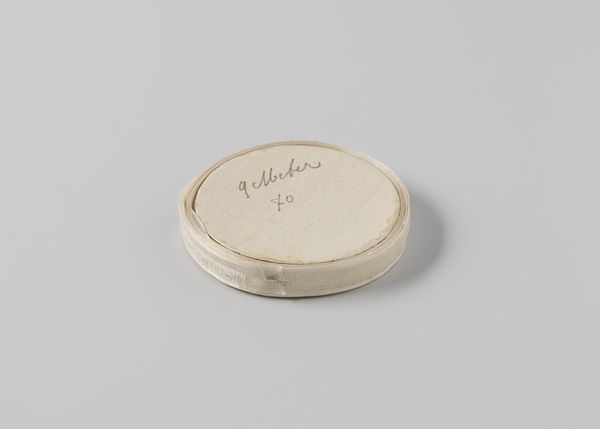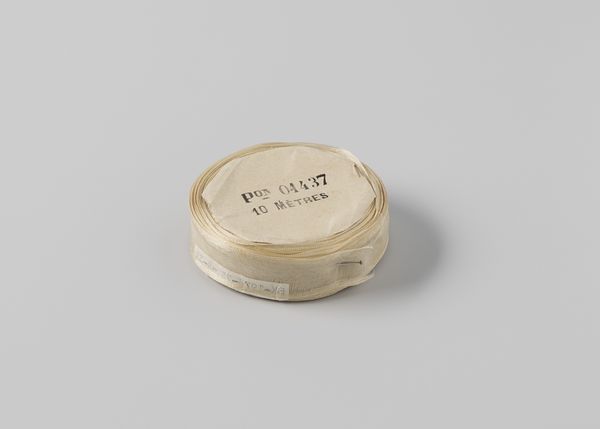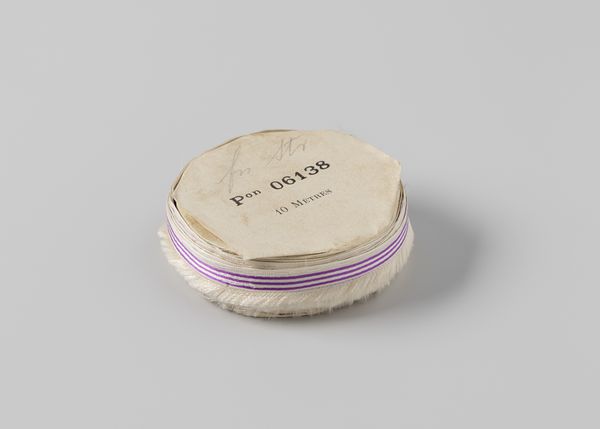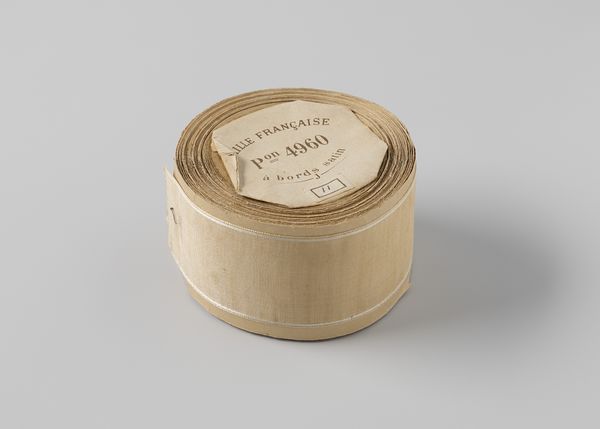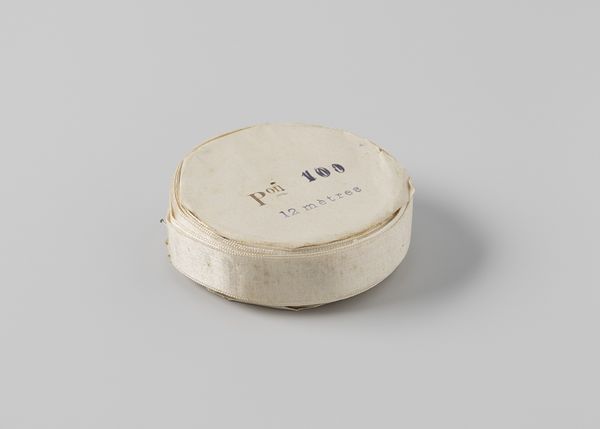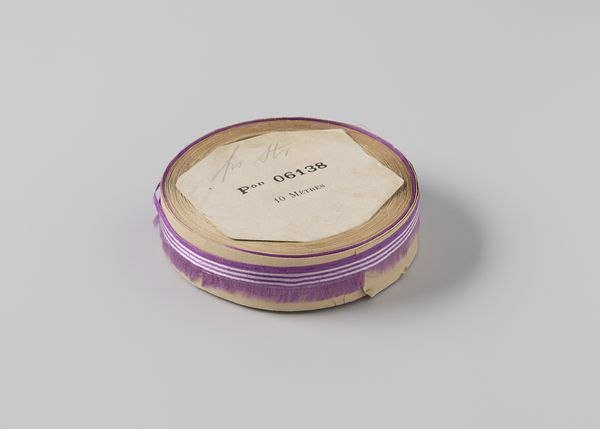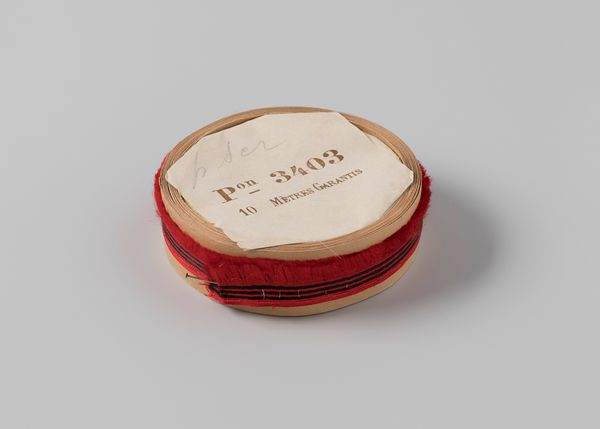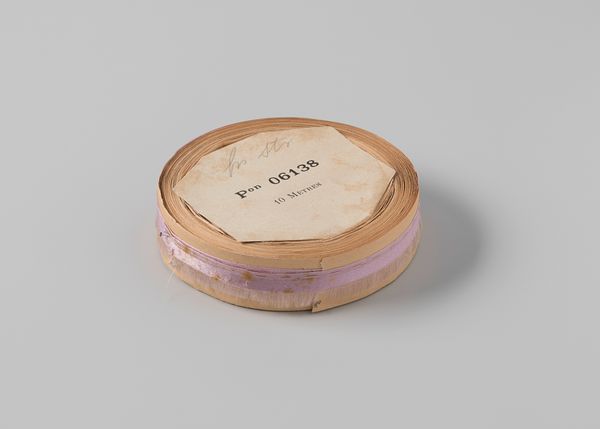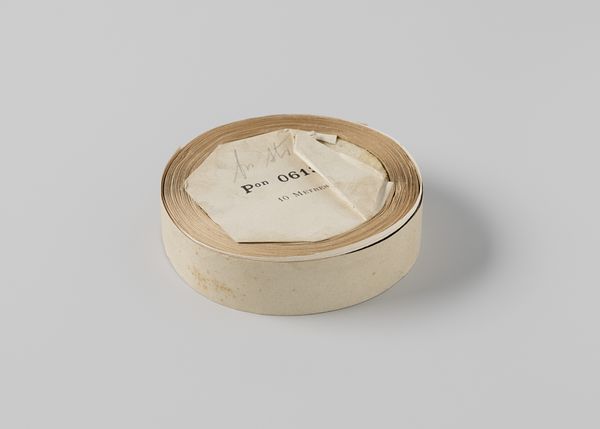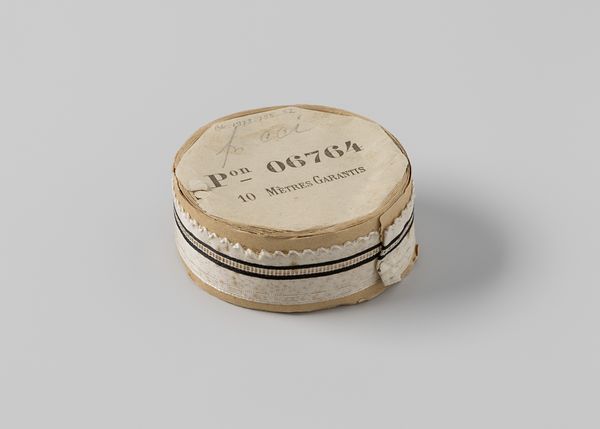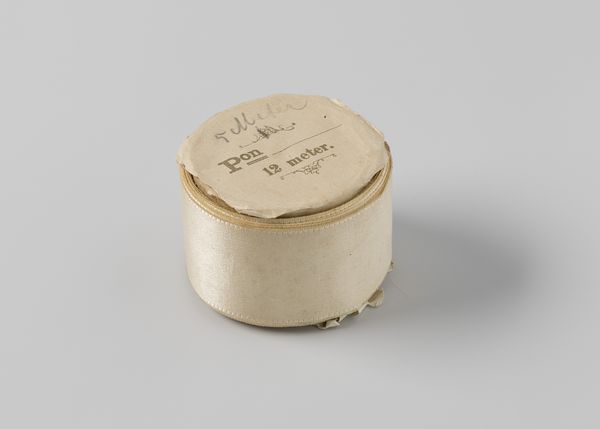
Rol met wit lint met één gerafelde zijde en drie zwarte horizontale strepen c. 1935
0:00
0:00
gustavschnitzler
Rijksmuseum
photography
#
photography
#
modernism
Dimensions: width 1.5 cm, diameter 7.5 cm, height 2.1 cm
Copyright: Rijks Museum: Open Domain
Curator: Here we have a photograph from around 1935 by Gustav Schnitzler. It’s housed here at the Rijksmuseum. Editor: Immediately, it’s striking how this utterly mundane object is rendered almost iconic. The texture and tones feel loaded, like a relic with its own hidden story. Curator: It depicts a roll of white ribbon. More specifically, the full Dutch title translates to "Roll with white ribbon with one frayed side and three black horizontal stripes." Schnitzler was a key figure in the Neue Sachlichkeit, or New Objectivity, movement. Editor: So, embracing the industrial and shunning the romantic, in a sense? You can definitely see that rebellion against previous visual styles in its stark simplicity. What readings can we tease out from the 'ordinariness' presented? Curator: Absolutely, and this particular photograph seems to elevate the utilitarian to the level of art. He’s zeroing in on this tiny detail, forcing us to reconsider its place in the world, like he’s magnifying the role of craft in everyday life. It reminds me of the psychological power everyday objects held for Proust. Editor: The frayed edges and the bold, functional text on the label--'10 metres garantis'--it is visually so accessible yet it really prompts thoughts around consumerism. 'Guaranteed' by whom, for whom? And what of the absent maker, the women at home who might have employed it, post-purchase, in sewing and mending during a period when domestic resources were strained by political tensions? Curator: Yes, it functions as an intriguing visual echo of societal shifts at the time. Even that "frayed side," it hints at wear and use, like this ribbon has been involved in larger projects that are unseen, unacknowledged… Editor: In essence, then, through this image, the ribbon serves as a stand-in to spotlight women's material needs that were otherwise pushed into the background of national concern. A compelling work with powerful symbolic import, don't you think? Curator: Absolutely, seeing how Schnitzler captured an echo of domestic industry makes one want to re-evaluate not only aesthetics of daily life but the labour underscoring every commodity. Editor: Well put. I'll be considering the layered symbolism here, in ways I hadn't originally anticipated, the next time I am presented with any modern image with apparent artifice.
Comments
No comments
Be the first to comment and join the conversation on the ultimate creative platform.
